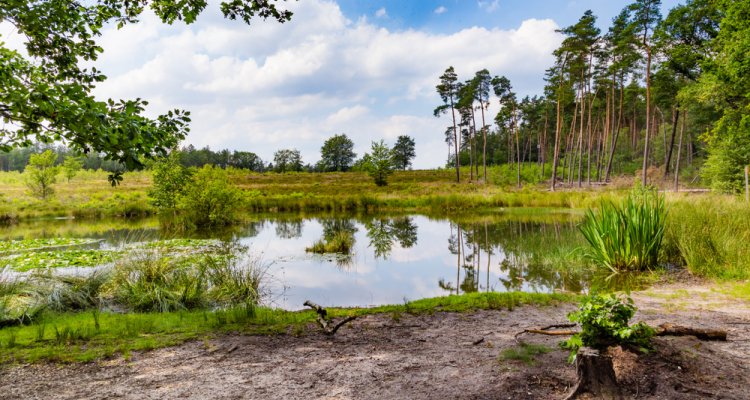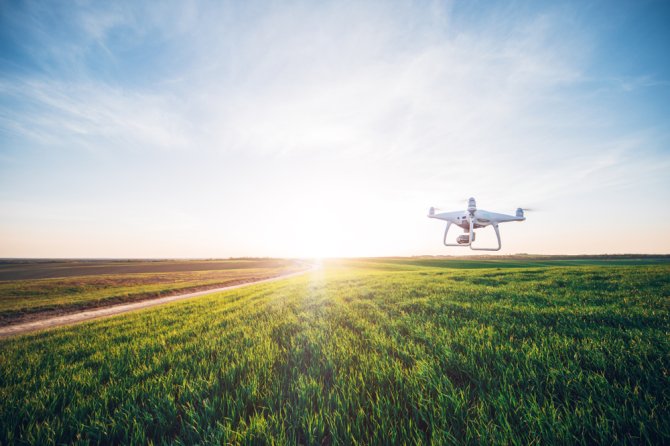
News
The green-blue future of Vallei en Veluwe
Recreation on the Costa del Veluwe, circular agriculture around a River Eem delta where water has free rein and circular agriculture around the A30. In a vision of the Vallei en Veluwe region in 2120, Wageningen University & Research and partners show what is possible when the water and soil system is a determining factor. “A hundred years seems a long way off, but you have to start now.”
During the Opening of the Academic Year, WUR is focusing on the connection between water and food security. This is a globally relevant theme, from the Himalayas to Spain, but also closer to home. Alongside partners like the Vallei en Veluwe Water Board, the provinces of Utrecht and Gelderland, water utility Vitens and CAS Foundation, researchers from Wageningen University & Research (WUR) studied the Vallei en Veluwe region. What might water management and the food supply look like in 2120?
Water-controlled region
“You use the best land for nature and non-intensive agriculture, because they are land-based,' says Onno Roosenschoon, Project Manager and research associate at Wageningen Environmental Research. Together with colleagues, he designed a map of the Vallei en Veluwe region. This map shows what the water and soil system in the region looks like and the related opportunities and threats. “We were simply saying: this is what the system looks like. This is the type of area and this is the function that suits it.” We found there was a great need for such a scientific basis. Roosenschoon: “People couldn’t wait to get their hands on this product.”
Based on the map, the Wageningen researchers then published a vision of the future: A water-controlled region - Vallei en Veluwe in 2120. This presents the different prospects for landscapes in the area. These landscapes will accommodate green cities and biodiversity-rich natural areas. There will still be a place for agriculture and the Veluwe will remain essential for the water supply in the Netherlands, even a hundred years from now.

Food Alley
WUR's vision also describes the area around the A30, running from Ede to Barneveld. Along this motorway, we could create Food Alley, an axis where intensive agriculture is practised. A lot of food would be produced there in a relatively small area, but in a circular way, with short chains and closed cycles. “You try to monitor and maintain food security,” says Roosenschoon.
At the same time, further away from the motorway, in the valley, there would actually be less space for agriculture. “In the valley, it is much more humid, the water level is quite high. That makes it less suitable for intensive agriculture,” Roosenschoon explains. “Wetlands would be more suited here. Or wet agriculture: fibre crops like flax, hemp and bulrush. These can be used in construction, particularly as insulation.”
Roosenschoon emphasises that he does not want to impose anything, but mainly wants to present the long-term impact of choices. “We provide examples, not a blueprint. It’s not us saying it has to be a certain way. But if you want to do something, make sure you know what you’re getting into. For example, if you choose to build housing in the valley, there could be significant problems due to flooding.”
Starting in 2024
Since the publication of the Vallei en Veluwe vision, more and more people have seen the Wageningen views. Roosenschoon and his colleagues have shared their vision of the future in many different places. “Managers find it useful. Such a vision can be hugely helpful for developing long-term policy, also relating to sensitive issues like agriculture and housing.” He sees the term 2120 coming up more and more in policy papers, but remains realistic: “I’m very pleased that our study has had such an impact, but everything takes time. Politics is a supertanker.”
2120 is still a long way off. The risk is that Wageningen's vision of the future is too non-committal, Roosenschoon acknowledges. “A century ago, no one could have imagined what the world would look like today. And in 2024, we are just as uncertain exactly what it will look like a hundred years from now. However: the choices we make today will have an impact for a long time to come. Building houses, for example, or constructing sewers: in 60 years' time, you will still be experiencing the advantages or the disadvantages. It’s therefore better to set a dot on the horizon now and work towards it.”